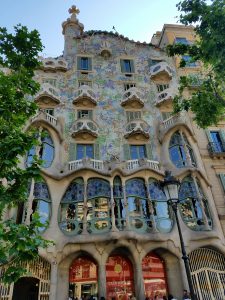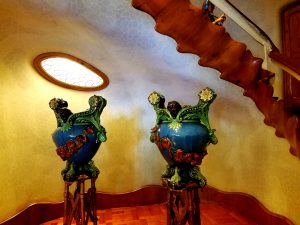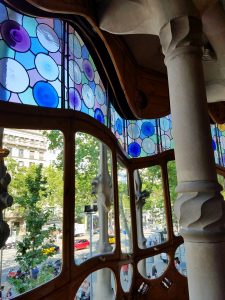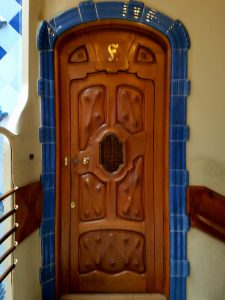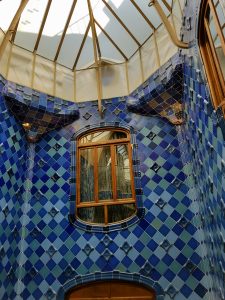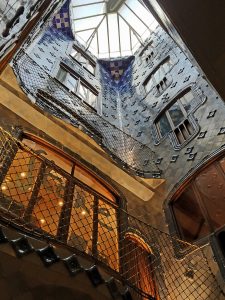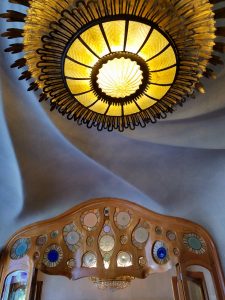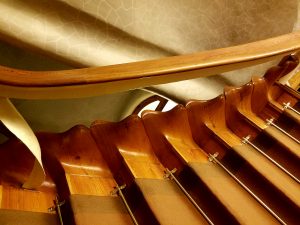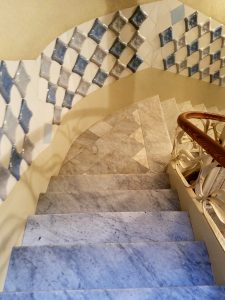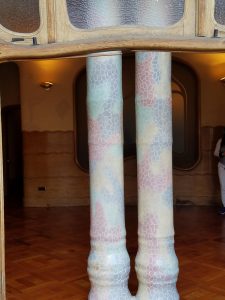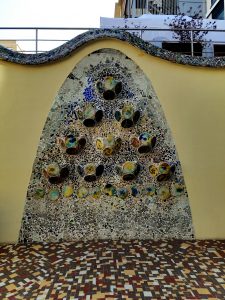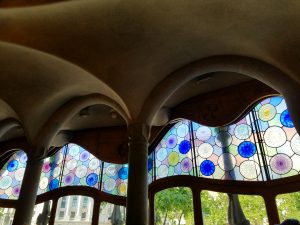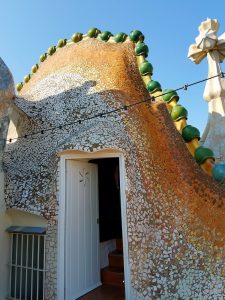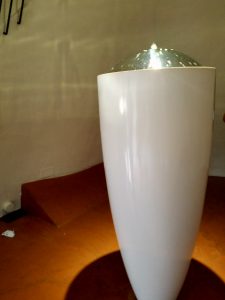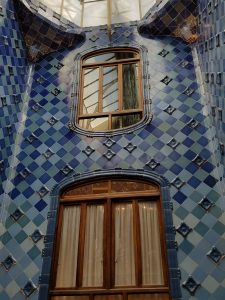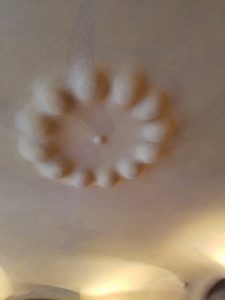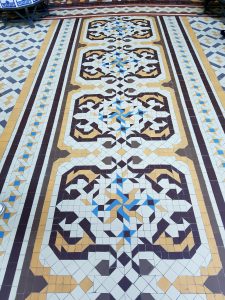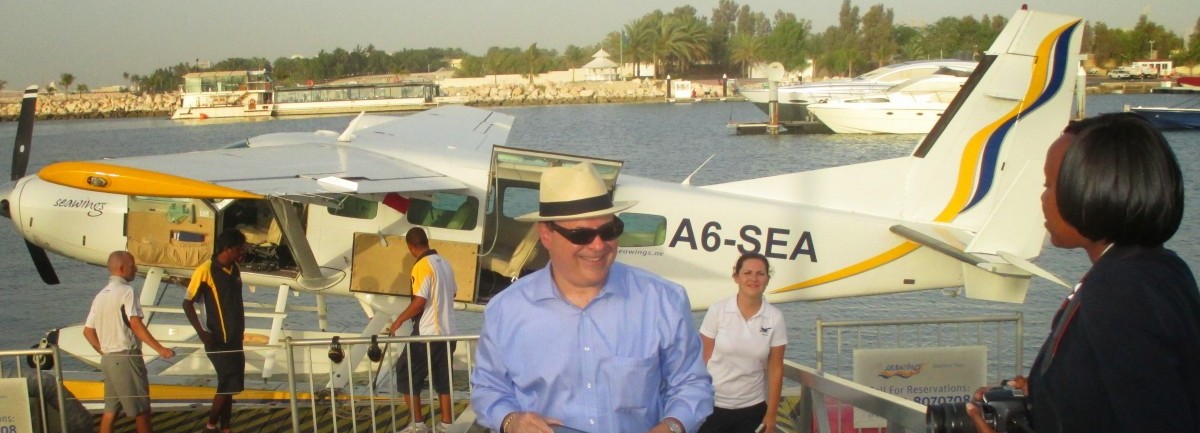I recently flew an American Airlines domestic first class flight from NYC to Miami. As an experienced aviation geek, I always choose the best airline configuration for my flight. But on this flight, I hit the jackpot! There were about 10 flights flying that day, most being on 737’s or MD 80’s (which had the normal domestic first class configuration). But I noticed one flight was on a 767-300, which has an international first class configuration. Meaning for the same price, I would be flying in a flat bed seat! The reason is that many of these planes will be taking off from Miami for an international destination. The seat was great, the meal was surprisingly good (chicken breast over couscous and pretzel bread) but the service was not good! The flight attendants would constantly tell us to wait when requesting something and they would hide and talk in the galley. There was no Wi-Fi and most surprisingly, there was no screen on the seat back for IFE- only overhead screens above every few seats. Since the flight was only two and a half hours, these things were not that hard to endure because the seat made up for it!
Atlantis…..a Fading Star!
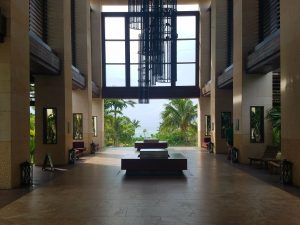
I recently came home from a nearly 3 week stay at the Cove Atlantis. I come every year. Before the Cove was built, I had stayed at Atlantis once, at the Royal Towers. It was so crowded that it seemed like Grand Central Station in New York at 4pm on a summer, Friday afternoon (you get the picture) and because of this, I vowed never to return. Then the Cove was built. More expensive meant it was less crowded. It was also located away from the other hotels which meant a pretty quick escape from the madness. The rooms were new and beautiful, there was a private beach and adult pool, and Mosaic, a gourmet buffet which is constantly voted one of the best restaurants in the Bahamas, was located on site. That was then!
My recent trip was not bad, but given the cost was not good enough a value proposition to justify returning. The Cove touts itself as part of Marriott’s Autograph Collection, but gives no recognition or benefit to Marriott highest tier frequent quests (I am a Marriott Platinum, the highest tier and got no upgrade, no Club level access, no late check-out….nothing). And if you don’t book directly with the hotel, you won’t even earn Marriott points for your stay! The rooms were nice ten years ago, but are starting to show their age. And the hotel was taken over by a private equity firm investor after the original Atlantis owner defaulted in making payment on its note. And as all private equity firms, only interested in an exit strategy on their investment, begin to cut the amount of employees at the property to save money, are not willing to make any further investment and thus the service suffers.
In the past, this would not have really affected Atlantis, as it was “the only show in town”. However, with the recent opening of Bahamar, which has the largest casino in the Caribbean, and when all is finished will have a Grand Hyatt, Rosewood and SLS hotels (all luxury), this is no longer the case. The counter argument is that Bahamar is for single adults and couples and Atlantis is for kids, so it will always make money. But Bahamar recently bought the former Wyndham Crystal Palace and will turn this property into a water park, so it is challenging Atlantis on all levels.
I have many find memories of my stays at the Cove Atlantis but for now it is just a fading star!
If This Hotel Works Out a Few Kinks in its Service, It Will Put All of the Other Disney Hotels Out of Business!
 I recently had a 9 night stay at the Four Seasons. And things started out on the wrong foot. I know service and luxury and “luxury service” well having recently done a 90 First Class Five Star Trip around the world (see my blog: www.toscanoworldtrip.blogspot.com). And I stayed at the best hotels in the world, one of the best being the Four Seasons Florence, Italy. So for me luxury service starts when you arrive at the hotel and when you check in. The Disney Four Seasons is definitely not up to snuff in its front desk staffing. Some don’t have a clue, others give you wrong information because they probably don’t know the answer and are nervous. In any event this is not acceptable at any luxury hotel much less at a Four Seasons! Aside from that hiccup, the hotel has been great! The hard product (rooms, pools, lobby, outdoor areas) are fabulous! The location is great! Any room would be nice (I am in an Oak View Suite). The food is good. The bus which takes you to the Disney Parks is prompt and luxurious compared to any other bus line at the parks. And the spa is incredible-the staff, the masseuse and the facility is better than any hotel in Orlando! I will be staying here for 8 more nights and thus will probably know every aspect of this hotel as well as anyone by the time I leave (and I will be sure to write
I recently had a 9 night stay at the Four Seasons. And things started out on the wrong foot. I know service and luxury and “luxury service” well having recently done a 90 First Class Five Star Trip around the world (see my blog: www.toscanoworldtrip.blogspot.com). And I stayed at the best hotels in the world, one of the best being the Four Seasons Florence, Italy. So for me luxury service starts when you arrive at the hotel and when you check in. The Disney Four Seasons is definitely not up to snuff in its front desk staffing. Some don’t have a clue, others give you wrong information because they probably don’t know the answer and are nervous. In any event this is not acceptable at any luxury hotel much less at a Four Seasons! Aside from that hiccup, the hotel has been great! The hard product (rooms, pools, lobby, outdoor areas) are fabulous! The location is great! Any room would be nice (I am in an Oak View Suite). The food is good. The bus which takes you to the Disney Parks is prompt and luxurious compared to any other bus line at the parks. And the spa is incredible-the staff, the masseuse and the facility is better than any hotel in Orlando! I will be staying here for 8 more nights and thus will probably know every aspect of this hotel as well as anyone by the time I leave (and I will be sure to write
another review then). As a frequent guest at the Grand Floridian and every other luxury hotel in the area, I can only say that once the Disney Four Seasons cleans up its front desk service act, these hotels better watch out because this will be the only real luxury choice in the Disney area!
Burj al Arab-still the world’s best luxury hotel!

I have been a guest at the Burj al Arab every couple of years over the last few years. And yet every time I come to the Burj, I desire to return. There are many great hotels in the world. There are many great hotels in Dubai. But for the Burj, any one of these other hotels could be the world’s best. But the Burj is in a class by itself. There is the Burj and then there are all of the other hotels. The Burj does it with its unmatched hard product- every room is at least a duplex one bedroom suite (many are two and three bedroom suites), beautiful spa, pool and beach and a variety of restaurants serving distinctly delicious food. But what really sets the Burj apart is its unrivalled soft product-its service and its people. A team of polished butlers outside your door 24 hours to fulfill nearly any request. Every employee greets you with a smile, many by your name. This is what differentiates the Burj. And this is how the Burj is able to become not only the hotel in a destination, but the destination itself! And this is the most sought after branding accomplishment, yet the most difficult to achieve. Since the Burj is firmly anchored with luxury hotel veterans such as Mr. Ahmed Ereiba and Ms. Stephanie Zawada, I am sure that it will continue to be the World’s Best Luxury Hotel for years to come!
Intercontinental Tahiti Resort and Spa
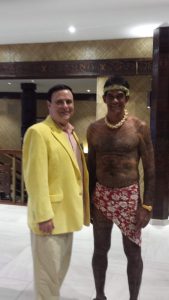
Tip #1- Don’t skip Tahiti on the way to the other islands. Tip #2- Stay at the Intercontinental Tahiti!
I recently arrived in French Polynesia. Everyone was telling me to skip Tahiti (land there and take a plane to Bora Bora or a ferry to Moorea (my response was that I did not come only to see tourists on their honeymoon-I came to see French Polynesia (meet the locals, hear their language and music, eat their food, learn their customs) So glad I did! And the best choice when in Tahiti is the InterContinental Resort and Spa. Beautiful setting (a view of the volcano mountaintops of Moorea), 5 minutes to the airport, 10 minutes to the capital of Papeete, great restaurants and spa and really helpful and friendly staff. And with the new GM, Mr. Thierry Brovelli (who is a hotel industry expert and veteran, I can only see this hotel going from good to better! So instead of saying “Nana” (goodbye) to Tahiti, say “Ia Orana” (welcome and hello) to the InterContinental Resort and Spa Tahiti!
Graycliff Airport Lounge (Nassau, Bahamas)

Airports are hectic these days. More people are traveling, security lines are long, planes are full, flights are delayed or cancelled, and luggage is lost. In other words beaucoup stress! That is the reason that an airport lounge can be an oasis of calm and relaxation in an otherwise hectic place. Not all airport lounges are created the same, however! On the domestic front, the best are not the airlines’ own lounges (American Admiral’s Club, United Club, Delta SkyClub) but the American Express Centurion Lounges (already in NYC (LGA), Miami (which I have recently reviewed on this blog), Dallas, Seattle, San Francisco and Las Vegas). And while on the domestic front Amex rules, it cannot hold a candle to the best international lounges, which by the way are all owned by airlines. Caviar, non-stop champagne, massages and haircuts, a la carte meals and even private sleeping rooms with showers and television sets are some of the common perks of these best lounges, belonging to Emirates, Etihad, Qatar, Lufthansa, Cathay Pacific, Singapore, Thai Airways and Air France. Lufthansa not only has a beautiful first class lounge in Frankfurt, but a whole First Class Terminal! Now that’s traveling!
Aside from these aspirational superstar lounges however, a decent lounge will be a quiet place where you can wait for your flight, have a drink, a snack or light meal, use the restroom or take a shower, and get some work done. On this note, I recently visited Graycliff Lounge at the airport in Nassau, Bahamas while waiting for my flight to Miami. The lounge is on the second floor of the airport near all of the departure gates. The lounge also contains a gift shop (which you can see in the above photo). Upon entering, you will be asked for your credentials for entering the lounge. For example, I entered using my Priority Pass, which gives me free access to over 600 airport lounges worldwide. At the Graycliff Lounge, I can also bring in immediate family members or two guests for free. The lounge is small but very nice and quiet (not too crowded).
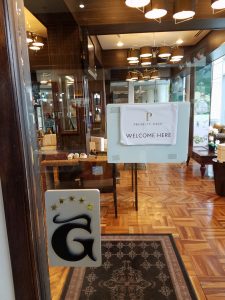
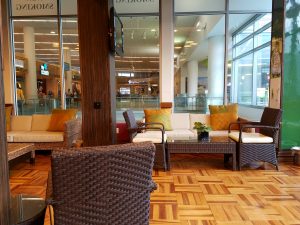
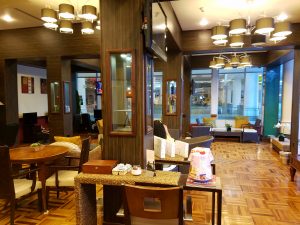
I was then given a menu and was told I could order something to eat and drink.

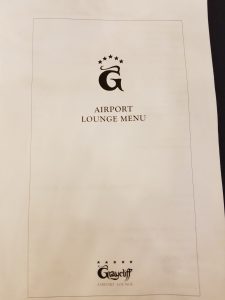
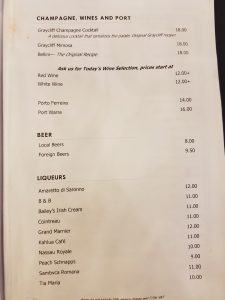

Most lounges have buffets or self-serve drink and snack selections and a bar for alcoholic beverages. The Graycliff Lounge, however, gives you a menu and a certain amount of credit to order something to eat and drink (around $20 per person). I ordered a pastrami panini and a Coke.
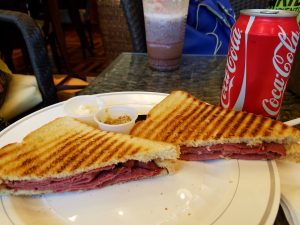
Outside the main seating area is a small bar where they can make you a cocktail, or you can order a beer, soda or an espresso.
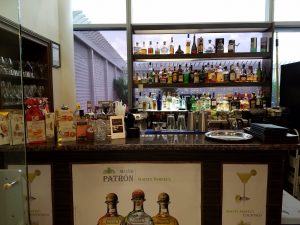
Inside the lounge, there are two computers for you to use, free wifi to use on your own device, and a couple of television sets.
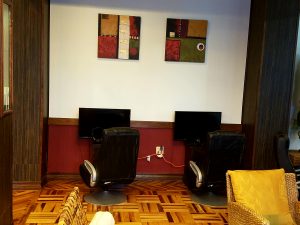
And don’t worry about missing your flight-even though they do not announce flight boardings and departures in the lounge, they do have this right in the main seating area
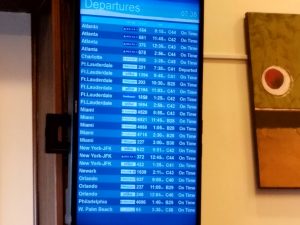
Nassau’s airport is not large so you will never have a long layover there. It does have many flights, however, especially from Florida This makes the Graycliff Lounge the perfect place to relax for an hour with a snack and drink before your flight departure. Have you ever visited the Graycliff Lounge? What did you think?
The Amex Centurion Lounge in Miami- a worthwhile detour!

I booked a flight from New York City to the Bahamas. I could have booked a direct flight, but I purposely scheduled a five hour stopover in Miami so that I could experience the new Amex Centurion Lounge at Miami International Airport. For years, Amex had been dependent upon their partner airlines for lounge access, but after Continental Airlines(now United) terminated access for Amex cardholders, Amex started building their own Amex branded lounges. There are currently Amex Centurion airport lounges in New York (Laguardia), Miami, Las Vegas, San Francisco, Seattle, Dallas-Fort Worth and Houston, with more to come!
I landed in Miami and quickly entered the lounge. Lounge access is free for Amex Centurion and Platinum Card holders along with 2 guests or their spouse and children under 18 years old. Other Amex card holders can access the lounge (space permitting) by paying $50. The lounge is modern, spacious and comfortable, with ample seating.
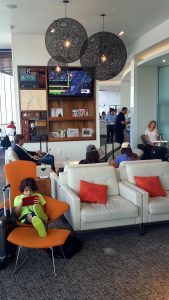
In addition to the main seating area, there are 2 or 3 smaller seating areas, one of which is my favorite, since it is more quiet and private.
One of the great things about the lounge is the gourmet food and drink selection. The menu is prepared by the famous Miami based chef, Michelle Bernstein, an expert in Latino inspired dishes. There is also a full bar with free premium alcohol and signature cocktails. I chose the chimuchurri grilled chicken and roasted squash.



They also had a delicious looking polenta dish.

I did however try the delicious salad.

Watermelon, greek salad, arugula, feta and cucumbers-the sweet, tart and salty flavor contrasts was just amazing.
All this eating made me thirsty so I always kept the bar in sight!
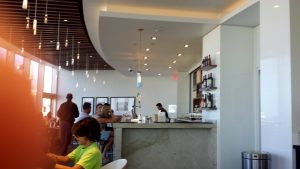
Dessert was a hard cchoice-Michy’s bread pudding or those warm, gooey macadamia nut cookies-so I did the only fair thing-I had both!

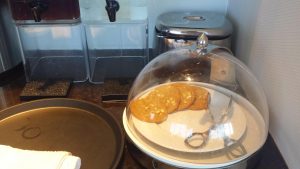
And dessert was followed by a cappuccino.


The lounge was a great place for watching the planes take off due to the large floor to ceiling windows.

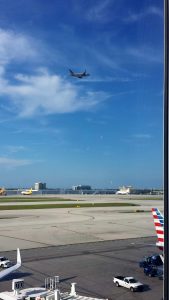
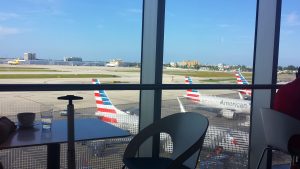
The high point of the lounge, however, was its Exhale Spa, which offers complimentary 15 minute neck and back massages and manicures. It is by appointment and the ability to book one (or more) appointments depends on what time you get to the lounge and how long you will be there. Upon entering the lounge at 1:00pm the lounge was rather empty, so I had a back and neck massage at 1:30pm. When I finished the massage at 1:45pm, I immediately booked the men’s manicure for 2:30pm. Both the massage and manicure were great and relaxing!



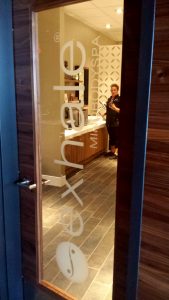

Amex did a great thing by building their own airport lounges. Besides the obvious branding benefits, they can no longer be held captive by partner airlines. I spent a great afternoon at the Amex Centurion Lounge in Miami- great food, great drinks and great spa treatments. So when you are flying close to Miami, this lounge makes a worthwhile detour!
Lord I was born a Rambla man!
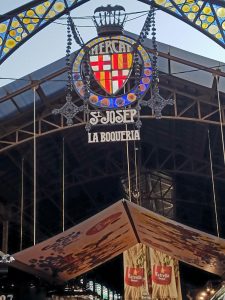
Every big city has its touristy shopping street. New York has Fifth Avenue. Miami Beach has Collins Avenue. Rio de Janeiro has Avenida Atlantica. Barcelona has La Rambla. La Rambla stretches for about one and a half kilometers. It has a main pedestrian area in the middle flanked on each end by a narrow car lane, which are in turn bordered by narrow sidewalks.

La Rambla has many cafes, restaurants and kiosks selling all types of food, drinks and souvenirs. Barcelona’s main public market, La Boqueria, is also on la Rambla. La Boqueria has been on la Rambla since the 13th century and in its current location since the 19th century. But one thing has not changed-the quality of foodstuff available in la Boqueria. Try to quickly walk through the front of the market which is a dizzying array of stalls selling fruit on sticks and fruit juices (known in Barcelona as “zumos”). As you walk further through la Boqueria, you will get to the stalls selling dried fruit and nuts, cheese, meat, fresh fish and seafood.

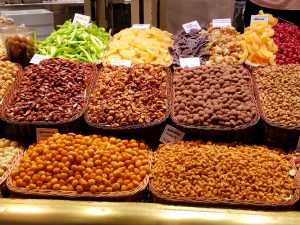




Among the stalls are small cafes where you can try the “plato” (special of the day), eat a ham (jamon iberico) and cheese sandwich or drink a delicious espresso. Many of the locals have their favorite stalls, so make a friend and get insider info on where to get the best of everything at la Boqueria! Aside from the delicious food, la Boqueria is a cultural and historic landmark in Barcelona and is a “must see” and a walk on la Rambla is a “must do.”
And on the day I visited la Boqueria and walked on la Rambla, I had an additional “must do” experience- on the way home, we stopped at Montjuic. Montjuic (literally mountain of the Jews) is a mountain right on the outskirts of Barcelona where one gets a different perspective and view of this great city!
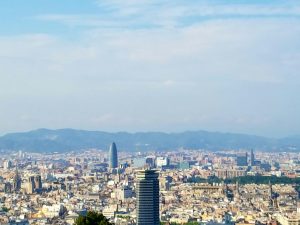
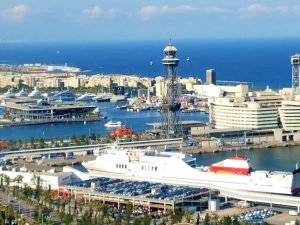
A Most Beautiful Madonna

About 45 minutes outside of Barcelona lies the Montserrat Mountain. On top of this mountain you can find the Benedictine monastery and a Catholic church dedicated to the Virgin Mary of Montserrat, one of the patron saints of Catalonia. In the front of the church, a shrine was built on an elevated platform behind the altar. The statue of the Black Madonna aka “La Moreneta” is venerated at this shrine.
But getting to the shrine is half the fun. You can either drive or take the cable car from the base of the mountain (my recommendation) to reach the shrine. The ride on the cable car up the mountain is an exciting, yet short (10 minute) ride.
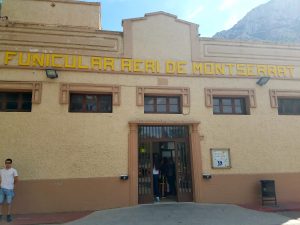
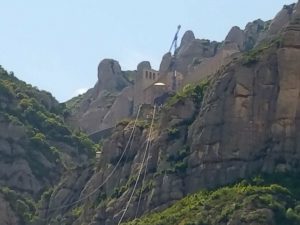
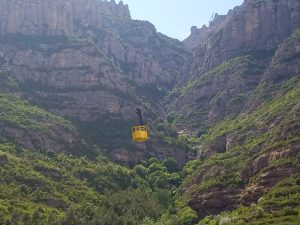
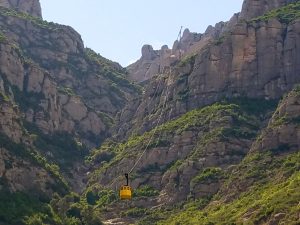
After a couple of jerky movements and getting really close to the rocks, our exciting ride ends. When we disembark the cable car, we are greeted by what looks like a quaint, little town. In reality it is a monastery, church and shrine. There is a fairly large cafeteria, gift shop and tourist information center also.
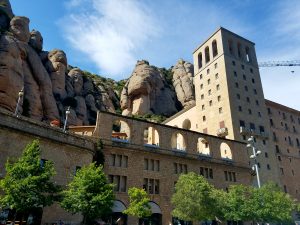
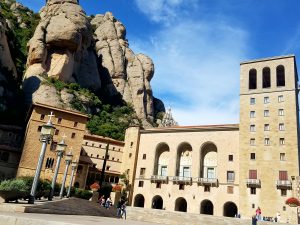
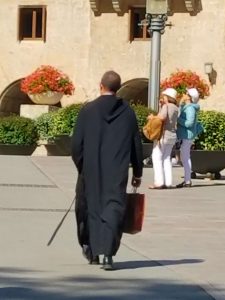
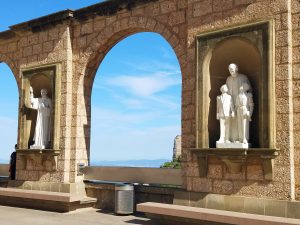
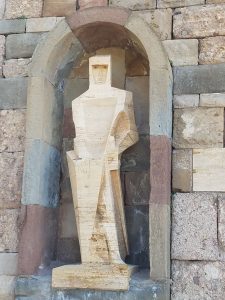
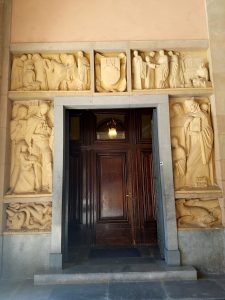
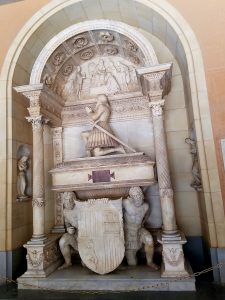
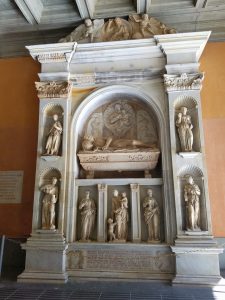

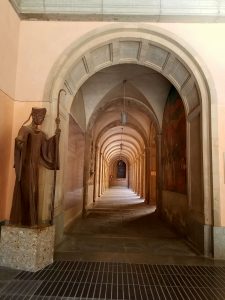
After leaving the entry way, one enters the atrium.
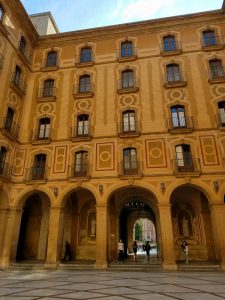
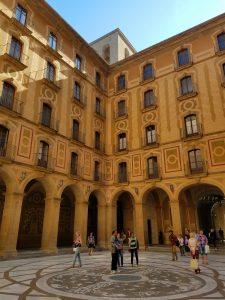
From the atrium you can see the church’s facade.
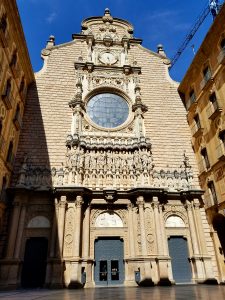
The church inside is quaint and beautifully decorated
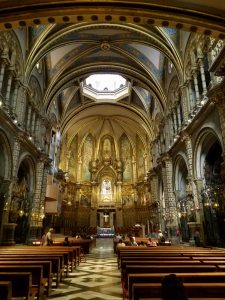
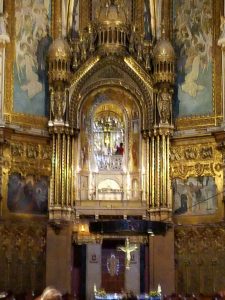
Behind the altar is a covered stairway to reach the shrine of the Virgin Mary of Montserrat.
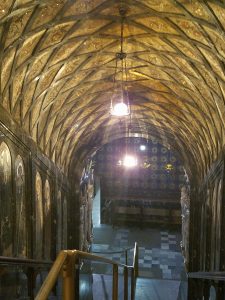
There is a beautiful, frescoed ceiling in the room before entering the shrine.
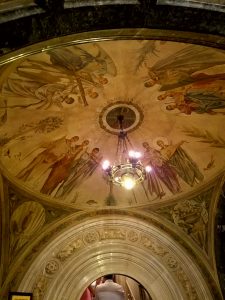
After walking up a few more stairs you reach the main attraction, the statue of the Black Madonna aka “La Moreneta”.

Each visitor can stand before the Madonna and say a prayer or simply look at the beautiful statue. After leaving the shrine, one enters an open area with sections of candles where you can make an offering if you wish.
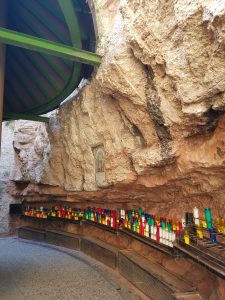
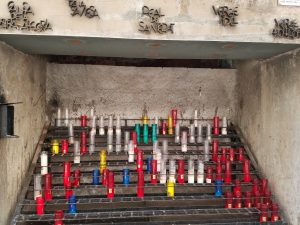
There are many prayers and inscriptions in the Catalan language on wall tiles.
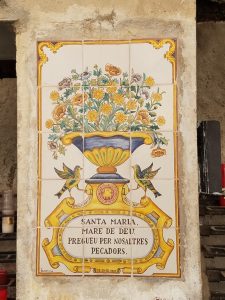
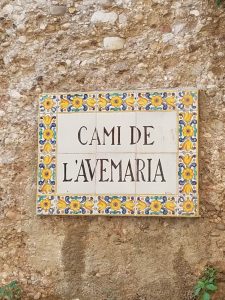
The Catalan language is the language of Barcelona as well as the Balearic Islands (Ibiza), the micro state of Andorra, parts of France, Sardinia and even mainland Italy. It has many similarities to Italian, French, and Portuguese and seems much closer to Latin than any of the other romance languages.
After exiting the area with the candles, the view of the plaza and surrounding area is equally as nice as when you enter.
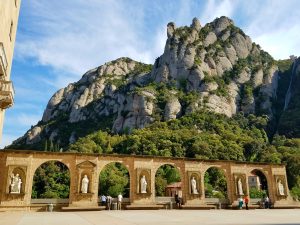
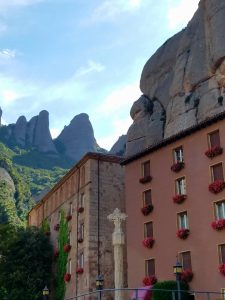
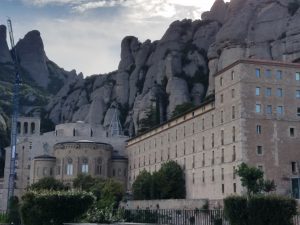
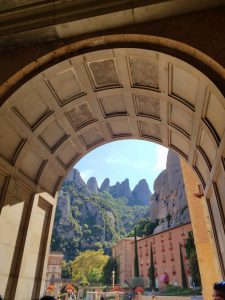
After exiting the plaza, you can marvel again at the view of and from the mountain.
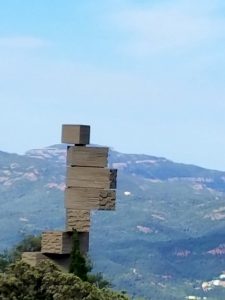

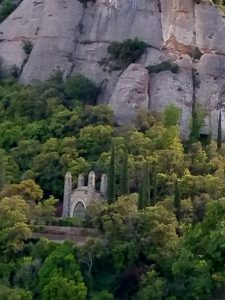


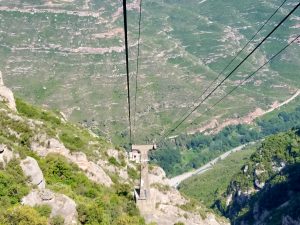
Since we came up the mountain in the cable car, we decided to drive back down to get a different perspective.
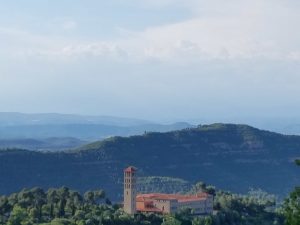
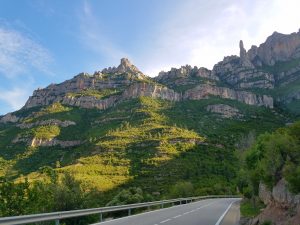
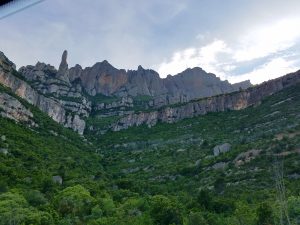
The day trip to Montserrat was one of the highlights of my trip to Barcelona (and this is a great compliment if you know this city!) And without a doubt, La Moreneta was much more beautiful and awe inspiring than any earthly Madonna!
Gaudí was not gaudy…..he was a genius!
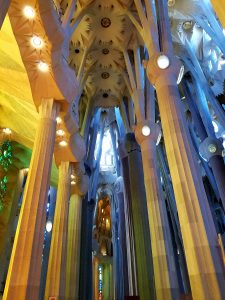
Antoni Gaudí was a Spanish architect from Catalonia, whose work was the epitome of the Modernist style. Having been referred to as the “Dante of architecture”, he was undoubtedly one of the top architects of the 19th and 20th centuries. For those lucky enough to be in Barcelona, many of his works are located there, seven of which are UNESCO world heritage sites. I didn’t have much time so I decided to visit 2 of his works, The Sagrada Familia Church and the Casa Batlló. One religious work and another non-religious one, but the essence of Gaudí clearly shone through in both.
The Sagrada Familia Church is Gaudí’s signature work; one which he started in 1882 and worked on throughout his whole life. The Church has still not been finished but with government and private forces working together (for once) the schedule of 2027 for completion may come a lot sooner. Look at the pictures and notice the similarities of trees and the forest:
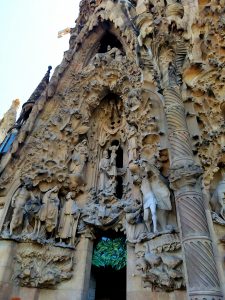
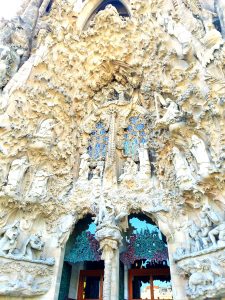
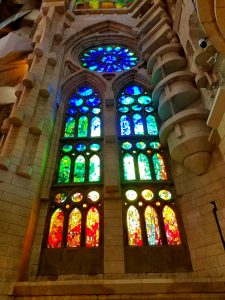
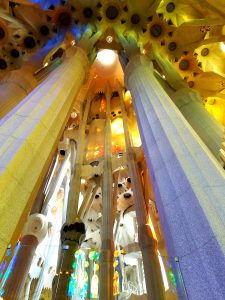
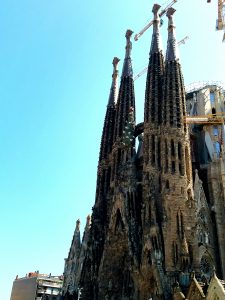
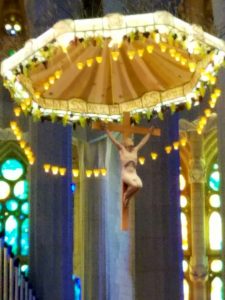
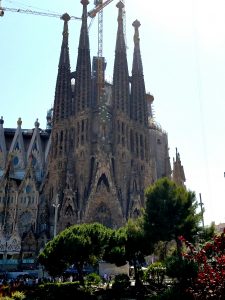
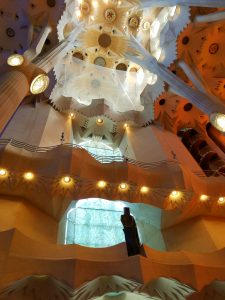
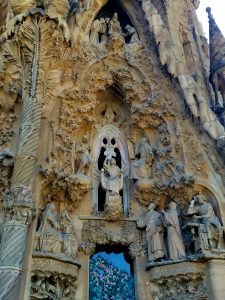
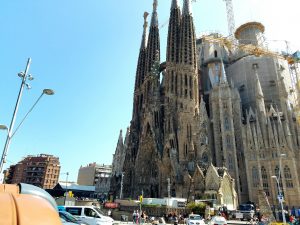
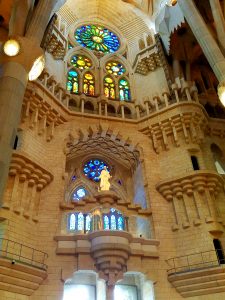
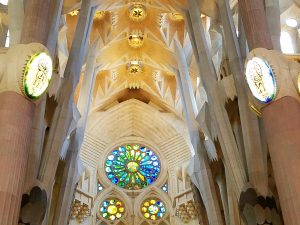
Casa Batlló is a house Gaudí built for the Batlló family, the head of which was one of Gaudí’s chief patrons. The house is a whimsical, colorful maze of everything but straight lines. There was both a nautical as well as anatomical theme, hence the nickname “house of bones”:
